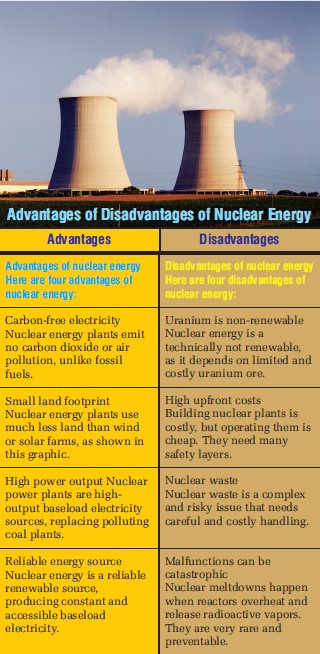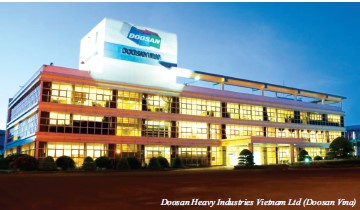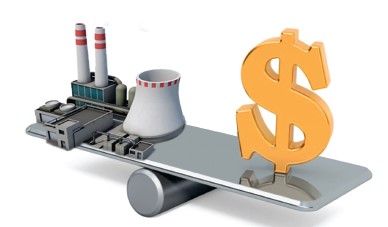
Ramdas Shenoy, Consulting Editor
Energy is the ultimate requirement for our survival. Countries can collapse if their energy needs are not met. Often, when we discuss clean energy in today’s context, nuclear energy plays a significant role in preserving air quality by generating substantial amounts of carbon-free electricity. In the US alone, it powers communities in 28 States, and contribute to many non-electric applications, ranging from medicine to space exploration.
The Workplace of Thermal Power inside the U.S. Division of Energy (DOE) centres its examination basically around keeping up with the current armada of reactors, growing new high level reactor advances, and further developing the atomic fuel cycle to expand the manageability of the energy supply. Below are some of the main advantages of nuclear energy and the challenges currently facing the industry today
| Clean Option | Create Jobs |
|---|---|
| Nuclear energy is the primary source of clean power in the US, generating nearly 800 billion kilowatt-hours of electricity annually and supplying over half of the country’s emission-free electricity. This helps avoid more than 450 million metric tons of carbon emissions each year, equivalent to removing 100 million vehicles from the road. | The nuclear industry gives generously compensated, high ability occupations and venture that upholds nearby networks. Development of another thermal energy station produces large number of jobs on location and thousands more in the network. For each 1,000 MWe of atomic limit built, exactly 200,000 job years of employment is generated. Nuclear industry pay will, in general, be higher than normal, mirroring the expert abilities of the employees. |

Nuclear energy projects increase the GDP development in the short and long haul. The nuclear industry helps to support jobs directly and indirectly. For each direct job, approximately 2.5 to 3.5 indirect and induced jobs are generated.
National Security Card
A strong civilian nuclear sector plays a key role to a country’s national security and energy diplomacy. It gives a sense of self-sufficiency in the energy domain and also identify opportunities on the global platform.
Challenges of Nuclear Energy
Wrong Perception
Commercial nuclear energy is in some cases seen by the population as a risky preposition. This discernment is in many cases in view of three worldwide
atomic mishaps, its misleading relationship with atomic weapons, and the way things are depicted on well known network shows and movies.
Used Fuel, Transportation, Storage and Disposal
Nuclear is always perceived to be something dangerous, specifically with regards to its transportation, storage and disposal.
Any action connected with the nuclear cycle, that produces or uses radioactive materials creates radio-dynamic waste. The administration of radiation emanating radio active material involves concern and separates nuclear waste. The population at large looks for assurance for safe administration of radio active wastes. One has to appreciate that not all nuclear wastes are especially perilous or challenging to oversee when contrasted with other harmful industrial wastes.
High Working Capital
Challenging economic conditions have left the nuclear industry attempting to remain competitive. It requires dedicated efforts to modernize plant frameworks to reduce operational and maintenance costs while enhancing overall performance.

Scaling Up
Building a nuclear power plant is not easy as it seems, and there are numerous entry barriers for stakeholders with regards to cost, technology, compliance and safety standards. Conventional reactor designs are considered multi-billion dollar infrastructure projects.





